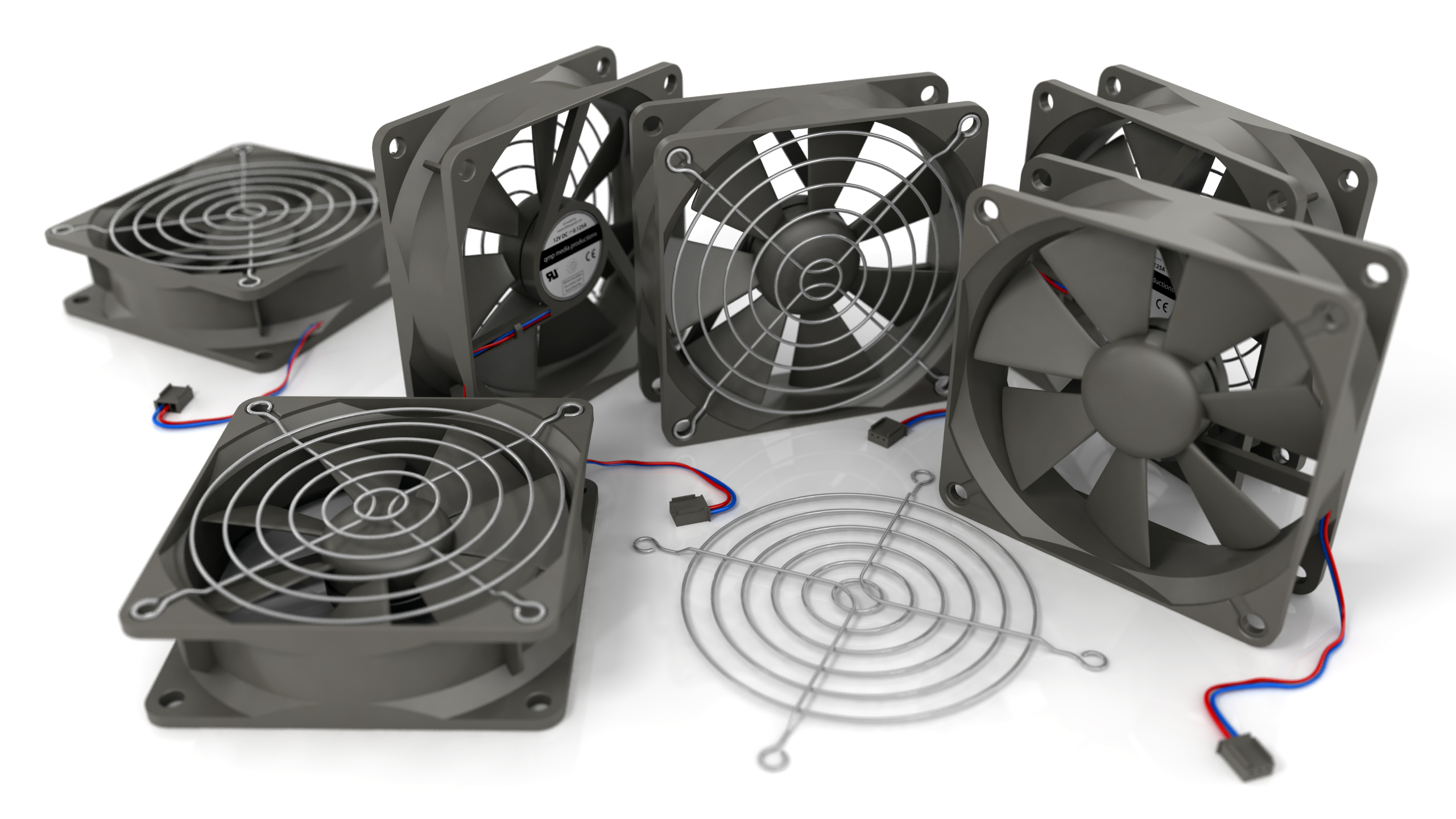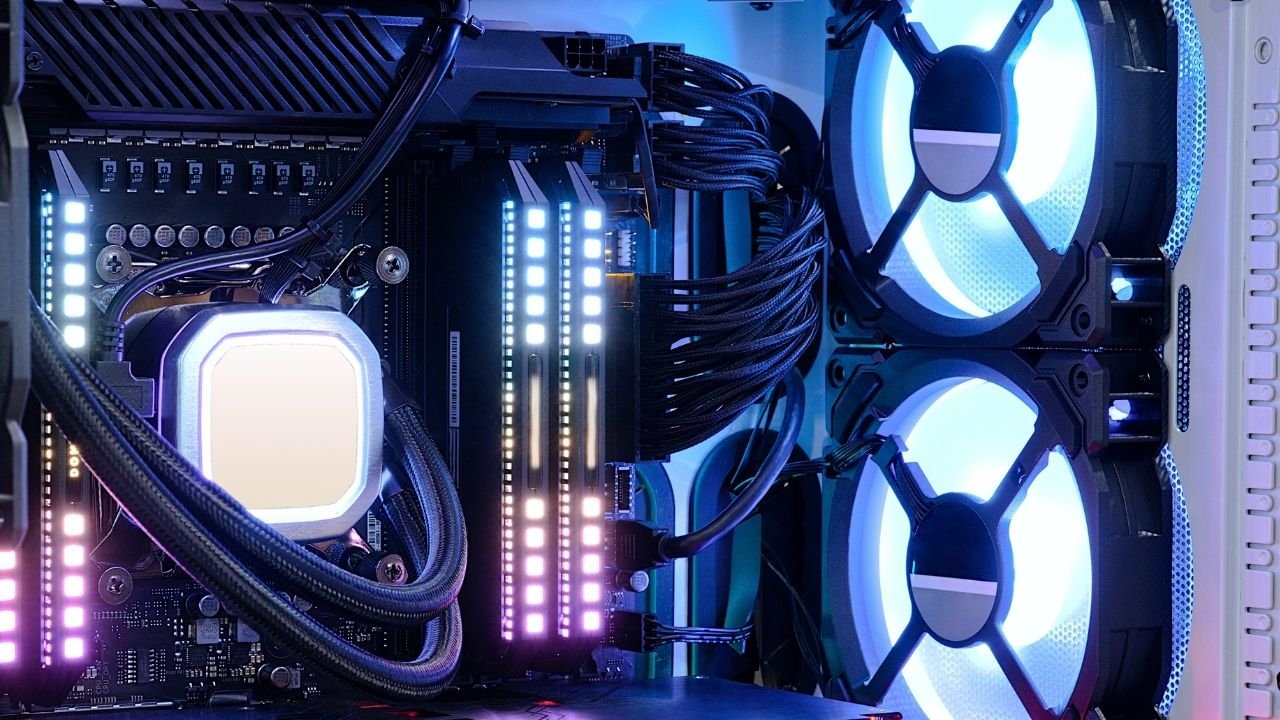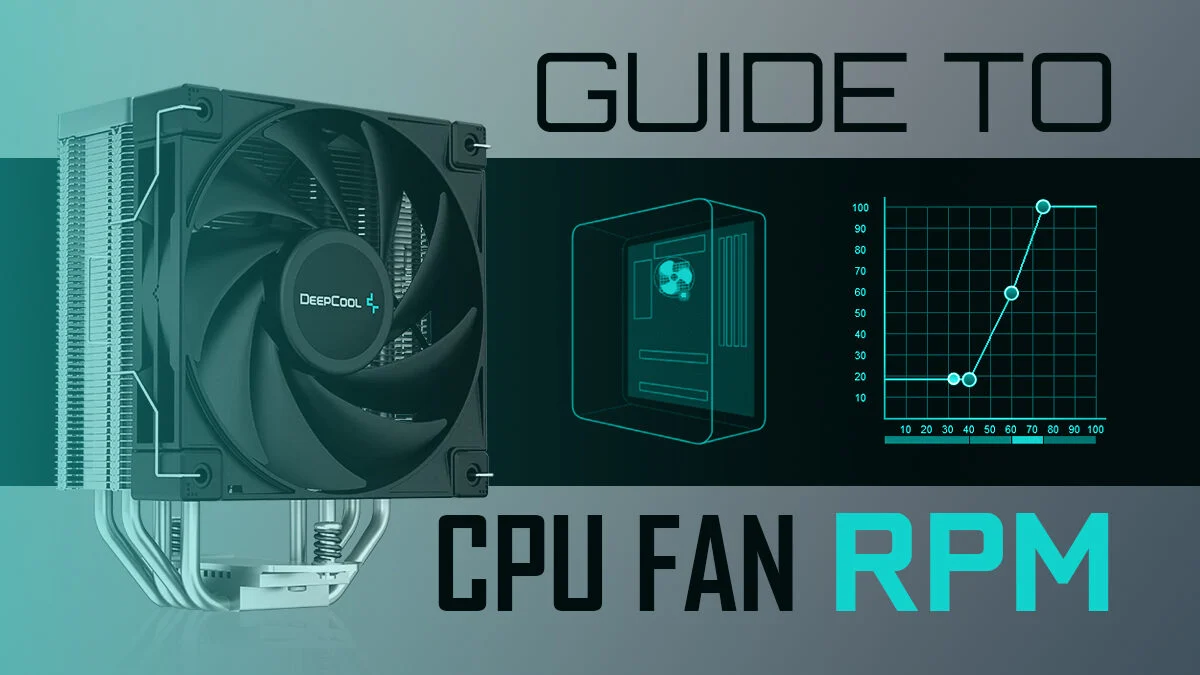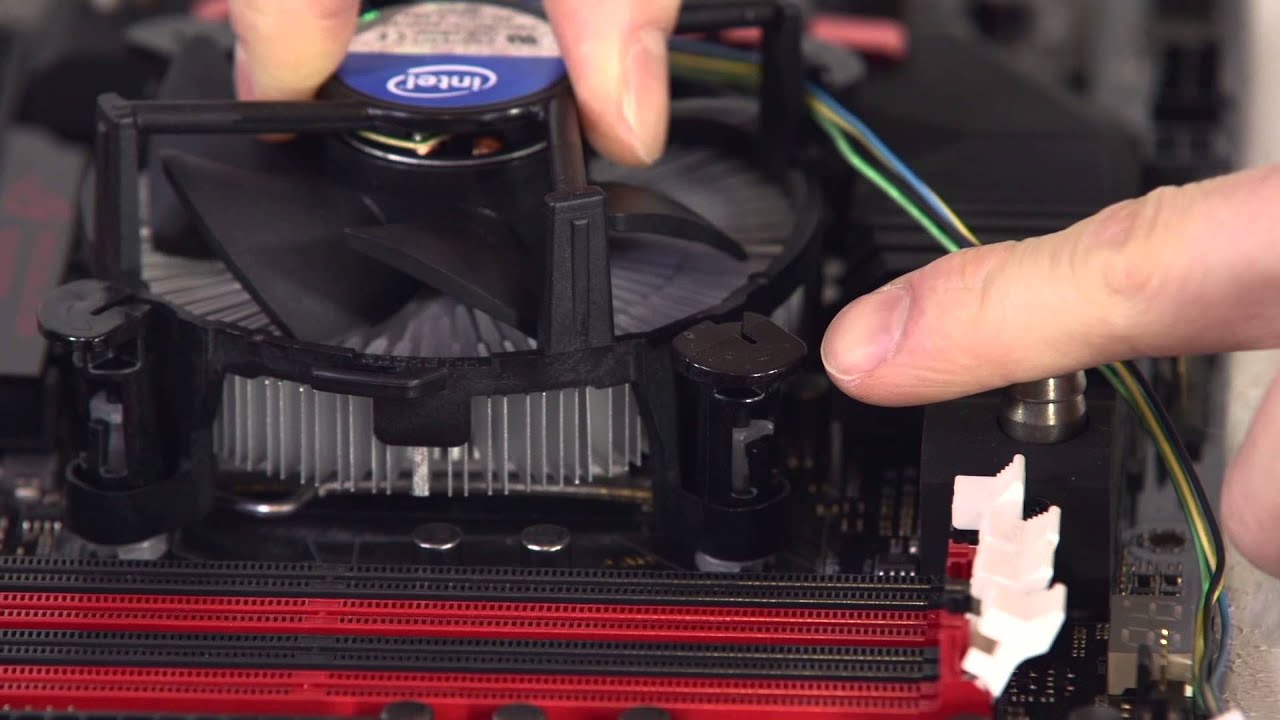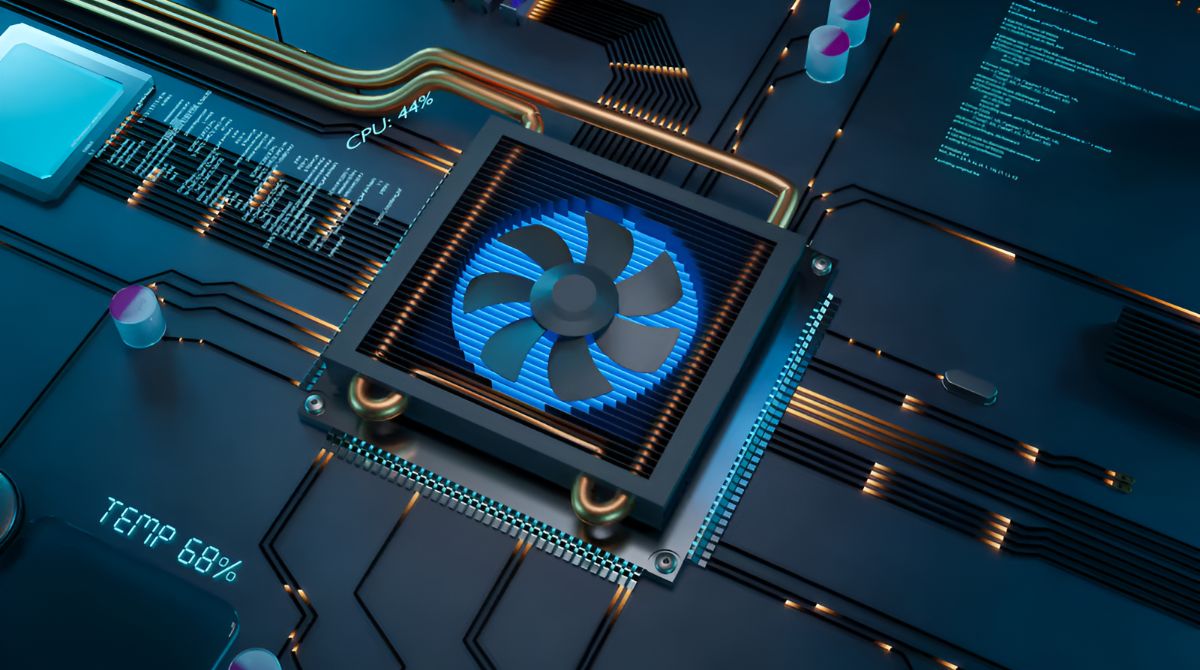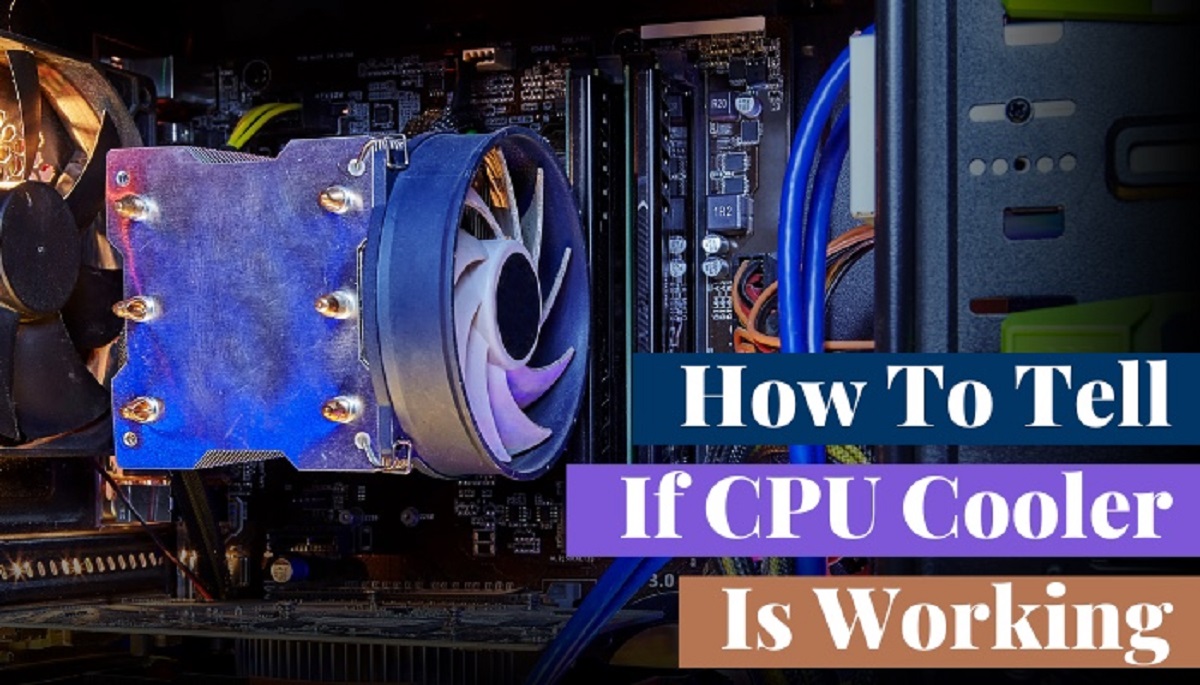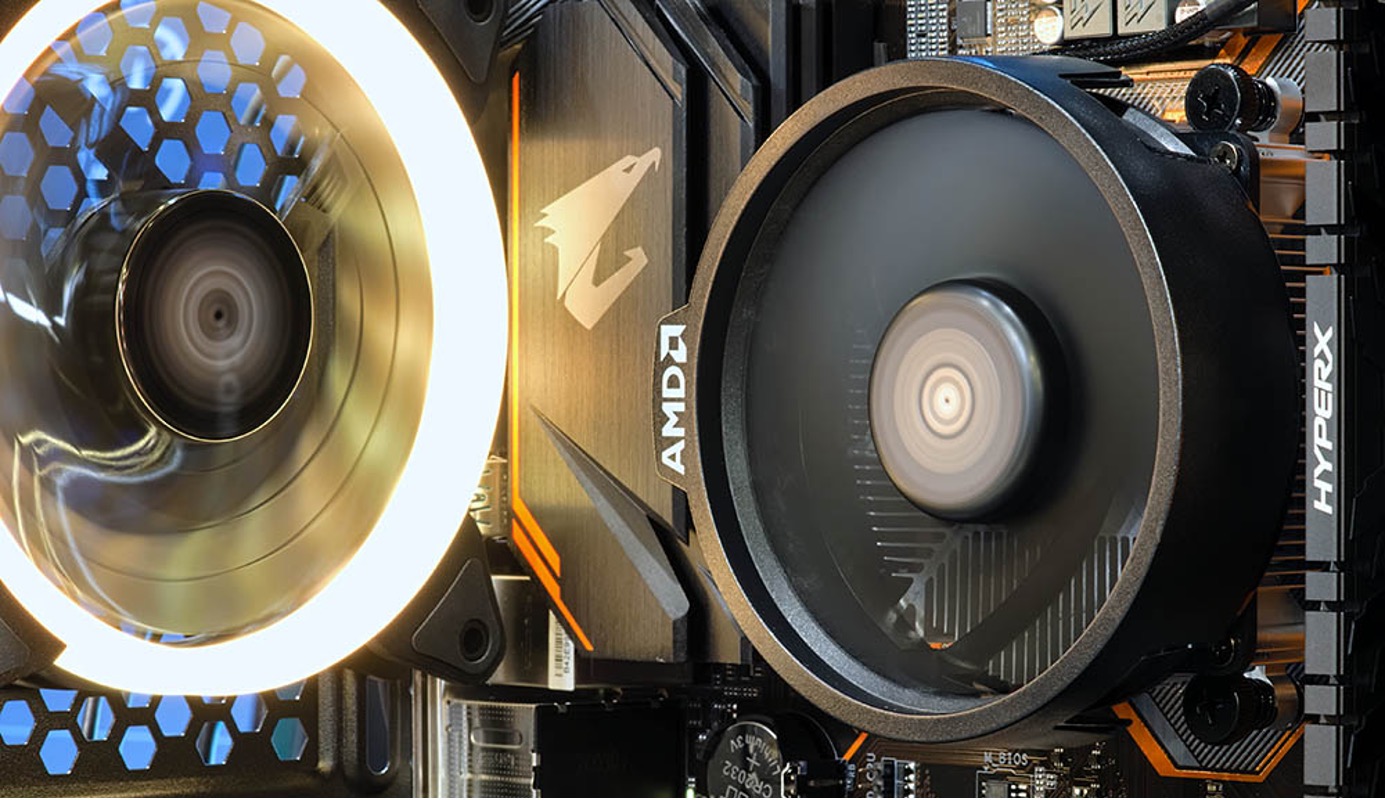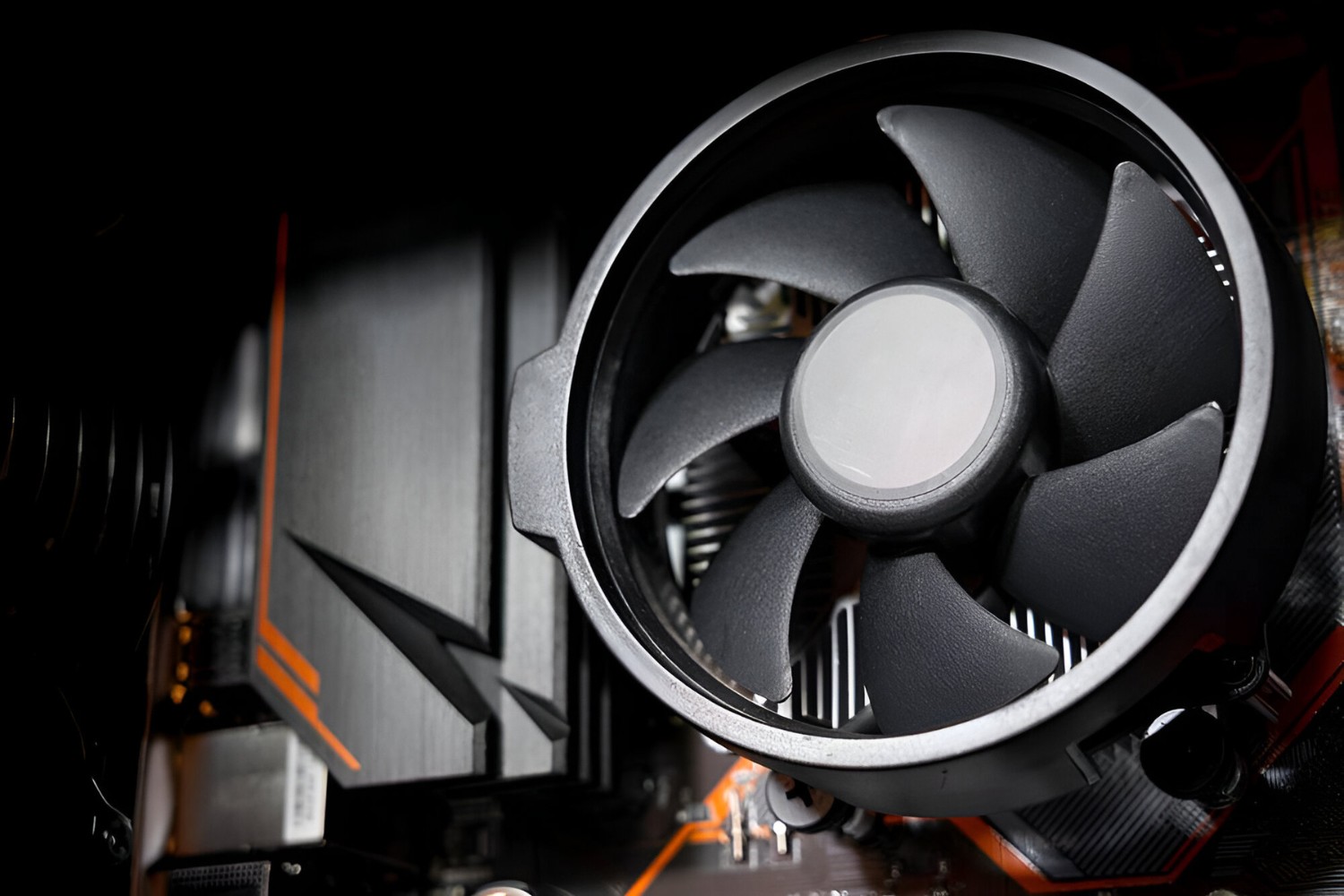Introduction
Welcome to the world of technology, where the CPU fan plays a crucial role in keeping our computer systems cool and running smoothly. In this article, we will explore the purpose, functionality, and types of CPU fans, as well as learn about common issues and tips for maintaining them.
As technology has advanced, computer components have become more powerful and generate significant amounts of heat. This heat can be detrimental to the performance and lifespan of these components, especially the central processing unit (CPU). The CPU is often considered the brain of the computer, responsible for executing instructions and performing calculations at a rapid pace. With such strenuous tasks, the CPU can heat up quickly, making it necessary to keep it cool.
The CPU fan, aptly named for its role, is a vital component of computer cooling systems. Its primary function is to dissipate the heat generated by the CPU, preventing overheating and ensuring efficient operation. Without proper cooling, the CPU can suffer from thermal throttling, which reduces its performance or even causes system instability. Therefore, understanding the importance and functionality of the CPU fan is essential for any computer user or enthusiast.
Now that we have a basic understanding of the significance of the CPU fan, let’s delve deeper into its purpose and how it works. Understanding these fundamental aspects will enable us to recognize the various types of CPU fans available and address common issues that may arise. Additionally, we will provide valuable tips for maintaining the CPU fan, which can extend its lifespan and optimize its performance.
What is the CPU Fan
The CPU fan, also known as the central processing unit fan, is an essential component of a computer’s cooling system. As the name suggests, its primary function is to cool down the CPU by dissipating heat. The CPU generates a significant amount of heat during its operation, and without proper cooling, it can easily overheat, leading to performance degradation, system instability, and even permanent damage.
The CPU fan is typically a small, electrically driven device that is mounted directly on top of the CPU. It consists of a fan blade, housed within a heatsink, and connected to the motherboard via a fan connector. The heatsink is made of materials with high thermal conductivity, such as aluminum or copper, which efficiently absorb and transfer heat away from the CPU.
When the computer is turned on, the CPU fan starts spinning, drawing in cool air from the surroundings and directing it towards the heatsink. As the air passes through the heatsink, it absorbs the heat from the CPU and carries it away, maintaining a relatively low temperature around the processor. The hot air is then expelled out of the computer case using ventilation systems like additional fans or vents.
The speed at which the CPU fan operates can be controlled either manually or automatically through the computer’s BIOS (Basic Input/Output System) or UEFI (Unified Extensible Firmware Interface). The fan speed is adjusted based on the temperature of the CPU, ensuring that it remains within safe operating limits. In some cases, software applications or motherboard utilities allow users to customize fan speeds and profiles according to their specific requirements.
Modern CPUs and CPU fans also incorporate additional features like fan curve optimization, where the fan speed is dynamically adjusted based on the CPU’s workload. This allows for efficient cooling while minimizing noise levels. Some high-end CPU fans also come with RGB lighting options, enhancing the visual aesthetic of the system.
Overall, the CPU fan plays a critical role in maintaining the temperature of the CPU and ensuring reliable and optimal performance of the computer system. Without it, the CPU would quickly overheat, leading to a range of issues that can affect the overall functioning and lifespan of the device. As such, it is vital to understand the importance of the CPU fan and keep it in good working condition to maximize the longevity and efficiency of your computer.
Importance of CPU Fan
The CPU fan plays a crucial role in maintaining the optimal temperature of the CPU, making it a vital component of any computer system. Let’s explore the importance of the CPU fan in more detail:
Preventing Overheating: The CPU generates a significant amount of heat while processing data and performing complex tasks. Without proper cooling, the CPU can quickly reach elevated temperatures, leading to performance degradation and potential damage. The CPU fan helps dissipate this heat by drawing in cool air and directing it towards the CPU heatsink, ensuring that the processor operates within safe temperature limits.
Optimizing Performance: High temperatures can negatively impact CPU performance. When a CPU reaches critical temperatures, it may activate thermal throttling, a mechanism that reduces the processor’s speed to prevent overheating. This reduction in speed can significantly impact system performance, causing applications to run slower and tasks to take longer. By effectively cooling the CPU, the fan helps maintain optimal performance even during demanding computing tasks.
Enhancing System Stability: Overheating not only affects performance but can also lead to system instability. When a CPU gets too hot, the computer may experience frequent crashes, unexpected shutdowns, or freezes. These issues disrupt workflow and can result in data loss or corruption. The CPU fan helps regulate temperature and ensures stable operation, minimizing the risk of system crashes or failures.
Prolonging Component Lifespan: Excessive heat can significantly impact the lifespan of computer components, particularly the CPU. High temperatures can cause the delicate circuitry within the CPU to degrade over time, leading to reduced longevity. By maintaining optimal temperatures, the CPU fan helps extend the lifespan of the CPU and other critical components, contributing to the overall longevity and reliability of the computer system.
Protecting Investments: A computer system is a significant investment, and proper cooling is essential for protecting that investment. Without a functioning CPU fan, the risk of damaging expensive hardware components increases substantially. Regularly monitoring and maintaining the CPU fan will help safeguard your investment and prevent costly repairs or replacements.
It is important to note that the importance of the CPU fan extends beyond just desktop or gaming computers. It is equally crucial for laptops, as these devices have limited airflow and are more prone to overheating. Ensuring the CPU fan is in good working condition is essential for both desktop and laptop users to maximize performance, stability, and longevity.
How Does CPU Fan Work
The CPU fan operates using a simple yet effective mechanism to keep the CPU cool. Let’s take a closer look at how the CPU fan works:
Heat Dissipation: The main objective of the CPU fan is to dissipate the heat generated by the CPU. As the CPU processes instructions and performs calculations, it produces a significant amount of heat. The CPU fan, along with a heatsink, acts as a cooling solution by drawing heat away from the CPU and transferring it to the surrounding air.
Airflow and Cooling: The CPU fan is designed to create airflow within the computer case. It draws in cool air from the outside and directs it towards the heatsink, which is in direct contact with the CPU. The heatsink absorbs the heat from the CPU, allowing the cool air to carry away the heat as it moves through the heatsink’s fins. This process effectively cools down the CPU and maintains its temperature within safe operating limits.
Thermal Sensors: To ensure efficient cooling, many CPU fans come equipped with thermal sensors. These sensors monitor the CPU’s temperature in real-time. If the temperature exceeds a certain threshold, the fan’s speed increases to enhance cooling. Conversely, if the temperature is within acceptable limits, the fan may operate at a lower speed to reduce noise levels. The thermal sensors enable automatic and dynamic control of the fan speed, optimizing cooling performance based on the CPU’s workload.
Controlling Fan Speed: The speed of the CPU fan can be controlled manually or automatically. In manual control, users have the option to adjust the fan speed using software utilities or hardware controls, depending on the motherboard and fan model. Automatic control, on the other hand, is typically managed by the computer’s BIOS or UEFI. These systems increase or decrease the fan speed based on the CPU’s temperature, ensuring proactive cooling as needed.
Additional Cooling Mechanisms: In some cases, computer systems may incorporate additional cooling mechanisms alongside the CPU fan. These mechanisms can include extra fans strategically placed within the case, liquid cooling solutions, or heat pipes that transfer heat away from the CPU. These technologies may supplement the CPU fan’s cooling capabilities, providing more effective heat dissipation in high-performance systems.
It’s important to note that the CPU fan is not the only component responsible for cooling the entire computer system. Other fans, such as case fans or graphics card fans, also assist in maintaining optimal airflow within the case. The combined efforts of these fans work together to ensure overall system cooling and prevent overheating of critical components.
Understanding how the CPU fan works allows computer users to appreciate the importance of proper cooling and take necessary precautions to prevent overheating. Regular maintenance, including cleaning dust buildup from the fan and heatsink, can help maintain the efficiency of the CPU fan and maximize its cooling performance.
Types of CPU Fans
The CPU fan market offers various types, each with its own advantages and characteristics. Let’s explore some of the common types of CPU fans available:
Air CPU Cooler: Air CPU coolers are the most common type of CPU fan. They consist of a heatsink with multiple heat pipes and a fan attached to it. The fan blows air across the heatsink, dissipating heat through convection. Air CPU coolers are often categorized into two types: stock coolers and aftermarket coolers. Stock coolers are provided by the CPU manufacturer and are generally adequate for basic cooling needs, while aftermarket coolers offer improved cooling performance and often include advanced features.
Liquid CPU Cooler: Liquid CPU coolers, also known as all-in-one (AIO) coolers, utilize a closed-loop system that circulates liquid through tubes to cool the CPU. The liquid absorbs heat from the CPU and carries it to a radiator, where it is dissipated with the help of fans. Liquid CPU coolers offer better heat dissipation and are ideal for overclocking and high-performance systems where lower temperatures are desired. They are often more expensive than air coolers and require additional space to accommodate the radiator.
Low-Profile CPU Cooler: Low-profile CPU coolers are specifically designed for compact computer cases or systems with limited space. They have a low profile and are usually shorter in height compared to standard CPU coolers. Despite their compact size, they still provide sufficient cooling performance for most mainstream CPUs.
Passive CPU Cooler: Passive CPU coolers rely solely on heatsinks without a fan. They make use of natural convection and rely on the airflow within the case to dissipate heat. Passive CPU coolers are generally quieter since they lack a fan, but their cooling performance may not be as efficient as active cooling solutions. They are commonly used in low-power systems or applications where silence and low noise levels are a priority.
Top-Flow CPU Cooler: Top-flow CPU coolers have a unique design where the fan blows air directly onto the motherboard and CPU, and the hot air is then expelled out through vents on the sides or rear. This design helps cool the surrounding components, such as memory modules and voltage regulators. Top-flow coolers can provide excellent cooling performance, especially in compact cases with limited airflow.
RGB CPU Cooler: RGB CPU coolers come with integrated RGB lighting, allowing users to customize the fan color and lighting effects according to their preference. The lighting can create an aesthetically pleasing visual impact within the computer case and is popular among enthusiasts.
When choosing a CPU fan, it’s important to consider factors such as CPU compatibility, cooling performance, noise levels, and the available space within the computer case. Each type of CPU fan has its strengths and weaknesses, and selecting the appropriate one depends on the specific requirements and preferences of the user.
Common Issues with CPU Fans
While CPU fans are essential for maintaining proper cooling in a computer system, they can encounter several common issues that can affect their performance and the overall health of the system. Let’s explore some of the typical problems associated with CPU fans:
Dust Accumulation: One of the most common issues with CPU fans is the accumulation of dust and debris over time. Dust particles can hinder airflow, reduce cooling efficiency, and increase noise levels. If not cleaned regularly, excessive dust buildup can even cause the fan to stop spinning altogether, leading to overheating and potential damage to the CPU. It is important to periodically clean the CPU fan and heatsink to ensure optimal performance.
Fan Noise: CPU fans, especially older or high-performance models, can produce noticeable noise levels. Sometimes, the noise can be a result of a faulty or worn-out bearing, which causes the fan to spin unevenly or generate excessive vibrations. In other cases, fan noise can occur due to high fan speeds designed to cope with increased CPU temperatures. Upgrading to a quieter fan or using fan speed control software can help address this issue.
Failed Fan: Like any mechanical component, CPU fans can fail over time. A failed fan may completely stop spinning, resulting in inadequate cooling or system overheating. If the fan is suspected to be faulty, it is important to replace it promptly to avoid potential damage to the CPU and other components. Monitoring tools can help check the fan’s RPM (rotations per minute) and detect any anomalies.
Improper Installation: Incorrect installation of the CPU fan can lead to inefficient cooling or even physical damage to the system. Issues can arise from improper alignment, insufficient thermal paste application, or loose connections. It is crucial to follow the manufacturer’s instructions carefully during installation, ensuring a secure and proper fit for the CPU fan.
Compatibility Issues: Incompatibility between the CPU and the CPU fan can arise, especially when upgrading or using aftermarket cooling solutions. Different sockets and CPU generations have specific requirements, and using an incompatible CPU fan can result in improper thermal conductivity or mounting difficulties. It is essential to verify compatibility before purchasing or installing a CPU fan.
Fan Control Problems: Some users may encounter issues with fan control, where the CPU fan either runs at excessively high speeds or fails to adjust according to the CPU’s temperature. This can be due to incompatible or outdated software, BIOS settings, or faulty temperature sensors. Updating software, adjusting BIOS settings, or consulting manufacturer support can help resolve such problems.
Overclocking Challenges: Overclocking, pushing the CPU beyond its manufacturer’s specifications, can increase heat output and put additional strain on the CPU fan. Overclocking enthusiasts need to ensure that their CPU fan can handle the increased heat load and maintain stable temperatures. It may be necessary to invest in a more powerful CPU cooling solution or optimize fan speed settings for overclocked configurations.
Understanding these common issues can help users detect and address problems with their CPU fans promptly. Regular maintenance, proper cleaning, and careful installation can significantly mitigate these issues and ensure the CPU fan’s efficiency and longevity.
Tips for Maintaining CPU Fan
Maintaining and caring for your CPU fan is crucial to ensure its optimal performance and extend its lifespan. Here are some helpful tips for effectively maintaining your CPU fan:
Regular Cleaning: Dust and debris can accumulate on the fan blades and heatsink, reducing airflow and impeding cooling performance. To prevent this, periodically clean the CPU fan using compressed air or a soft brush. Ensure the computer is powered off and unplugged before cleaning to avoid any potential damage.
Monitor Temperatures: Keep an eye on your CPU temperatures using software monitoring tools or the BIOS. Monitoring temperature trends can help you identify any potential issues with cooling performance. If you notice temperatures consistently exceeding safe levels, it may be an indication of a problem with your CPU fan that needs attention.
Check Fan Speeds: Monitor the fan speeds using utilities or BIOS settings. Ensure that the fan is operating at adequate speeds to provide sufficient cooling while keeping noise levels in check. If the fan speed seems significantly lower than expected or the fan is noisy, it may be a sign of a malfunctioning or worn-out fan that requires replacement.
Update Software and Drivers: Keep your computer’s BIOS, operating system, and fan control software up to date. Manufacturers often release updates that improve compatibility, fan control algorithms, and overall system stability. Make sure to visit the manufacturer’s website to download the latest versions for optimal performance and functionality.
Verify Proper Mounting: Check periodically to ensure that the CPU fan is correctly mounted, with proper contact between the heatsink and the CPU. Loose or misaligned mounting can hinder heat dissipation and cause inadequate cooling. If necessary, reseat the CPU fan following the manufacturer’s instructions to ensure a secure and proper fit.
Use Quality Thermal Paste: When installing or reinstalling the CPU fan, make sure to use a high-quality thermal paste. Thermal paste facilitates better heat transfer between the CPU and the heatsink. Apply a thin, even layer of thermal paste following the manufacturer’s recommendations to ensure efficient heat dissipation.
Avoid Overclocking without Adequate Cooling: If you plan to overclock your CPU for increased performance, ensure that your CPU fan can handle the additional heat generated. Overclocking puts additional strain on the CPU, requiring more effective cooling. Consider investing in a high-performance CPU cooler designed for overclocking or liquid cooling solutions to keep temperatures within safe limits.
Keep the Surrounding Area Clean: Maintain a clean and dust-free environment around your computer. Ensure that the air vents and intakes are not obstructed, allowing proper airflow. This helps prevent the accumulation of dust and debris on the CPU fan and other components, improving cooling efficiency and reducing the risk of system overheating.
Consult Manufacturer Support: If you encounter persistent issues with your CPU fan, don’t hesitate to reach out to the manufacturer’s support team. They can provide specific guidance, troubleshoot problems, and advise on the best course of action for maintaining your CPU fan effectively.
By following these maintenance tips, you can ensure the optimal performance and longevity of your CPU fan, keeping your computer system cool and functioning efficiently.
Conclusion
The CPU fan is an integral component of any computer system, responsible for keeping the CPU cool and ensuring optimal performance and stability. We have explored the importance of the CPU fan in preventing overheating, optimizing performance, and prolonging the lifespan of critical components. Additionally, we have delved into how the CPU fan works, the different types available, common issues that can arise, and important tips for maintaining its efficiency.
Understanding the significance of the CPU fan allows us to recognize the need for proper cooling and maintenance. Regularly cleaning the fan, monitoring temperatures and fan speeds, updating software and drivers, and verifying the proper mounting of the CPU fan are essential practices for ensuring its optimal performance. Additionally, using quality thermal paste, avoiding overclocking without adequate cooling, and keeping the surrounding area clean all contribute to the longevity and efficiency of the CPU fan.
It is important to note that while the CPU fan plays a vital role in maintaining system health, it works in conjunction with other cooling mechanisms within the computer case, such as case fans or graphics card fans. Proper airflow and overall system cooling are crucial for maximizing the effectiveness of the CPU fan and preventing system overheating.
By following the tips and recommendations provided, computer users can enjoy a well-cooled and reliable system, free from overheating and performance degradation. Caring for the CPU fan ensures that the computer system functions optimally, extends the lifespan of critical components, and protects the investment made in the system.
So, make it a habit to maintain your CPU fan regularly, ensuring it remains clean, functioning properly, and offering efficient cooling. By doing so, you can enjoy the full potential of your computer system, whether it’s for work, gaming, or personal use.







